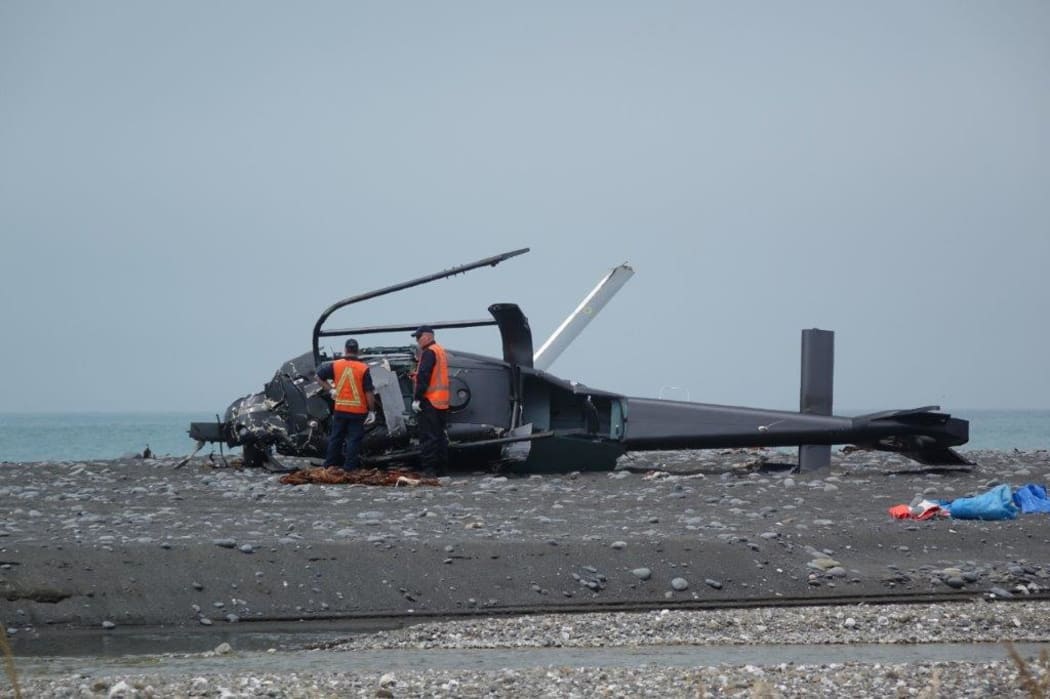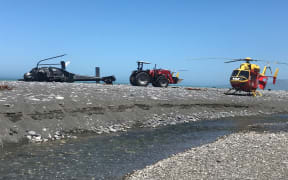The effectiveness of the tail rotor on the helicopter that crashed in Kekerengu this week will form a standard part of the investigation, the Transport Accident Investigation Commission said.

Inspectors at the crash site in Kekerengu. Photo: RNZ / Tracy Neal
A witness reported seeing the Airbus Helicopter EC120 spiralling out of control and plummeting to the ground close to the helicopter landing site near a cafe.
The crash killed pilot Andrew Davidson and his wife Lin Chen and injured three children.
In July this year the American Federal Aviation Administration issued an updated airworthiness directive for all Airbus EC120b helicopters, prompted by matters associated with their tail rotor blades.
It said that a changed manufacturing process for the tail rotor blades was implemented, affecting the structural characteristics of the blades and generating a new part number for these blades.
The new directive required operators to re-identify each affected rotor blade had a certain part number and serial number, and establish a life limit for the new part numbers.
This airworthiness directive also prohibited installation of any affected tail rotor blade identified with the old part number on any helicopter.
"The FAA is issuing this airworthiness directive to address the unsafe condition on these products," it said on a rule update on its federal register published in June this year.
The New Zealand Civil Aviation Authority published an updated schedule of airworthiness directives on the helicopter type in November this year.
The 14-page document included current and cancelled directives applicable to Airbus Helicopters EC120 B. A directive on the reduced life limitation on the tail rotor blades was published in September 2018, but the directive that prompted the updated schedule last month was a requirement for increased vigilance over the inspection of the helicopters' skid tubes.
The Transport Accident Investigation Commission opened an inquiry when it believed the circumstances of an accident or incident have - or were likely to have - significant implications for transport safety.
Accident inspectors were on site in Kekerengu on Wednesday before the helicopter was removed and transported to Wellington for further investigation.
Chief investigator of accidents Harald Hendel said the investigation team had inspected the wreckage, mapped the site, and talked with witnesses.
A spokesperson told RNZ News today that tail rotor effectiveness would be a line of inquiry in any investigation into an accident involving a helicopter.
"That, and a very broad range of other lines of inquiry including but not limited to safety notices from regulatory authorities both in New Zealand and elsewhere, along with maintenance records."
Hendel said the next stage of the investigation would include examination of the helicopter's components. The commission would also seek any recorded data from the helicopter's electronics, and obtain maintenance and other records from the operator.





